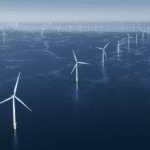Plans to build and operate the Cape Wind project nearly 5 miles offshore in Nantucket Sound, Mass., were approved on Tuesday by the Department of Interior’s Bureau of Ocean Energy Management, Regulation, and Enforcement (BOEMRE). Cape Wind Associates now says that construction of what could be the first U.S. offshore wind farm could begin as early as this fall, but the controversial project must still overcome several hurdles.
The Construction and Operations Plan (COP) submitted by project owners was required before construction could begin on the facility. In January, Cape Wind received a final permit from the Environmental Protection Agency and a Section 10 Permit form the U.S. Army Corps of Engineers.
“After a thorough review of environmental impacts, we are confident that this offshore commercial wind project – the first in the nation – can move forward. This will accelerate interest in the renewable energy sector generally and the offshore wind sector specifically, and spur innovation and investment in our nation’s energy infrastructure,” said BOEMRE Director Michael R. Bromwich.
The proposed action, including its size and location, remain substantially the same it was when it was analyzed in the Cape Wind Final Environmental Impact Statement (FEIS), which was published in January 2009. The Cape Wind energy project calls for 130 3.6-MW wind turbine generators, each with a maximum blade height of 440 feet, to be arranged in a grid pattern in Nantucket Sound. As part of its evaluation, BOEMRE said it conducted an environmental assessment to determine whether any significant impacts were not discussed in the 2009 FEIS and concluded that all impacts had been properly examined.
The $2.6 billion project has dealt with regulatory red tape for a decade. It still faces several legal barriers, including 11 pending lawsuits. National grid last year agreed to purchase 50% of power generated by the project in a 15-year contract, but Cape Wind must still also find a buyer for the remaining 50%.
Nstar, Massachusetts’ other large utility and potential buyer, has instead lined up contracts with three less expensive onshore wind farms, said the Boston Herald. The newspaper reported that a pending $4.2 billion merger with Northeast Utilities could put those projects under regulatory scrutiny, however.
Sources: POWERnews, BOEMRE, Boston Herald









